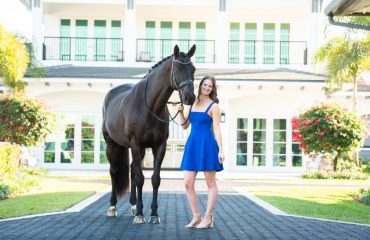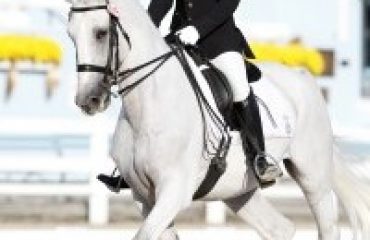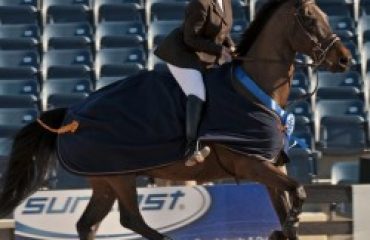
Brian Walker
Photo by Hervé Bonnaud, 1clicphoto.com
Brian Walker, a dual Canadian and American citizen, has trained, worked and ridden alongside the best in the world over the last 25 years. As a junior, Brian won the Maclay Medal Equitation Championship in 2001. Brian has made a name for himself by developing quality horses into successful competitors in both the hunter and jumper arenas, earning accolades for himself and his clients. Do you have a question you want Brian to answer? Send questions to editor@sidelinesnews.com.
You recently posted on Facebook about competing in a class of more than 70 horse-and-rider combinations. How do you block out the competition and do your best?
Sometimes we have to compete in classes with a lot of horses. More horses in a class doesn’t always mean that it’s harder to win, but it will make certain riders focus more on how they will do, losing track of what’s important: good riding and not always the results. For me, I try to keep it simple. I must ride well and jump a clear round, just as I try to do every time I go in the ring. Once I make the jump-off, then I try to ride the same as I would every jump-off: make short turns and try to be quick and efficient. More horses in a class leads to more mistakes in a class. Riders often think they need to go faster than they need to go with more entries in a class, which often results in faults they wouldn’t normally have. I find it harder to win a class with less than 15 riders because normally courses are under-built and not as many faults occur from other riders. In these types of classes, jump-offs are normally crazy fast. Keep in mind, when we go in the ring, we actually are really competing against ourselves.
Do you have any strategies for approaching a jump in the center? I try to aim for center, but my horse tends to drift to the left, making it more difficult to do tight turns on the other side.
It’s always good to try to train your horse to stay in the center. More often than not, our horses jump lower when they drift to one side or the other. However, sometimes you can use your horse’s drift to help you out. When I’m training at home, I like to really focus on keeping my horses straight. When I’m competing on a horse that has a bad tendency to drift to one side, I’ll think about a few places to try a little extra to keep him in the middle, but most of the time that isn’t a focus of mine when I go in the ring; there are too many other things to think about. If your horse drifts to the left and doesn’t turn well to the right, the solution is simple: in a jump-off, use the left drift to do fewer strides on the left turns, then when going to the right, it should make up for maybe doing extra strides to the right. In the end, better flatwork and training at home will help you keep your horse in the middle.
My horse doesn’t seem to like fly spray, but I don’t have a better way to keep flies and other insects away from him. What do you suggest I use?
Horses can be funny about fly spray. Most of the time, they get used to it. When your horse doesn’t like fly spray, you have two choices: let the bugs bite your horse with no fly spray or gradually get the horse used to fly spray. Both are better than forcing your horse with fly spray if they don’t like it. Start by always putting on fly spray in the stall, by spraying a towel then rubbing it on the horse. When horse gets used to the spray bottle, then start by spraying the legs and work upward. Normally, if you have a horse that is shy, you will always need to put it on his head by hand.
You recently posted a photo of yourself on Facebook from when you were a child. How young is too young to teach a child to jump on a horse?
I think safety is the most important thing when teaching young children to ride. Every child goes at his or her own pace. I don’t think there is an age that’s too young, but I do feel that it isn’t good to push children. Let them decide how fast they want to develop. I remember I fell off one summer when I was 6 years old. I was jumping crossrails. My pony spooked in a corner and I fell off the side. It had nothing to do with jumping, but I wouldn’t jump for three months afterward. However, something to keep in mind is that the earlier children start jumping, the more practice they get.
What do you do when it’s time to retire one of your horses? My horse is close to retirement, but I want to be sure she is well taken care of.
Retiring horses is always difficult. I think it’s best to retire a horse before they are really at the end of their career. When they are lame and can’t go anymore because you’ve used them too hard, then you’ve waited too long, unless a horse sustained an injury at an earlier age. I retired two of my good horses last year. They are both mares and I decided it was time to retire them to have enough time to breed them. There are lots of places to retire horses. I think a good retirement place has weather that is not too hot, has plenty of space to turn out and has someone there who constantly keeps an eye on the horses.













